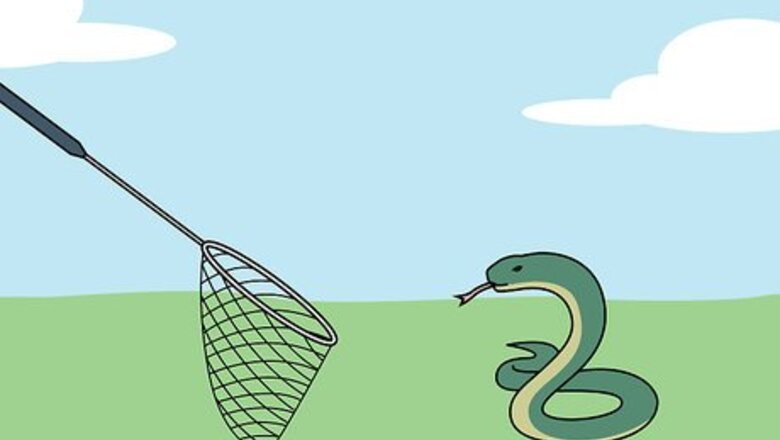
views
How to Catch a Snake
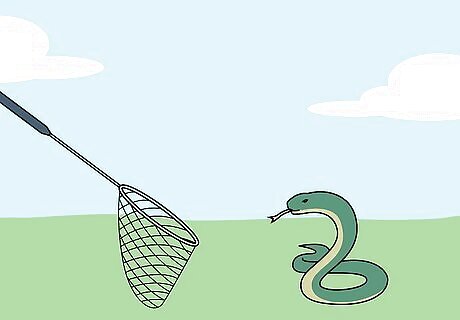
Coax the snake into a net. You can catch a snake using a long slender object like a badminton or tennis racket, or a long broom handle attached to a mosquito net. When you see the snake, get quickly to the scene. Place your net in front the snake's head and coax the snake into the net. The long slender object you attach to the net should be long enough to keep your body a safe distance from the snake, while attempting to net it. Once the snake enters the net, lift up the net immediately to prevent the snake from getting out. Make sure your net is large enough for the snake you're aiming to catch. The net in front of the snake's head is effective because the snake will interpret it as a place of safety and willingly enter it. Approach the snake carefully and quietly. Loud noises will provoke the snake to move away quickly or even bite.
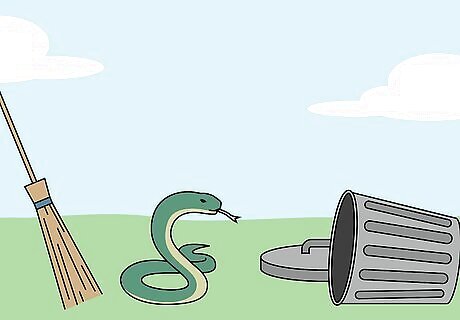
Use a garbage can and broom. This is a simple way to catch a snake without having to directly handle it. Take a large garbage can and lay it on its side. Coax the snake, using the broom, into the garbage can. You can then move the garbage can to where you would like to release the snake.

Pin the snake down. Do this by placing a forked stick directly behind its head and applying pressure. The amount of pressure to apply depends on the size of the snake, but it should be enough to keep them from moving their head without hurting the animal. There are special snake forks that can do this more effectively than a common stick.

Use items around your house to catch a snake. If a snake gets into your house and you want to quickly remove them, you may have to act quickly with the items at hand. Use an old shirt or bath towel, and a pillow case. Toss the rumpled up tee shirt or towel over the snake's head and upper body. The frightened snake will generally coil up under the cloth. Without delay, place the pillowcase down over the shirt. Slide the edge firmly along the floor, scooping up the shirt and snake together. This can be done with a lingerie bag if it is large enough and the snake is not venomous. Even if the snake is inside or outside coiled up, you can toss a heavy large towel over them and immediately place them in an empty box large enough to carry them in. Remove the towel. Close the box quickly and wait for the snake to settle down before opening it again. Make sure the bottom of the box is well sealed with tape, and have someone hold the box closed until you can release the snake at least 5 miles from your home. If you need to transport the snake in the box yourself, seal it well so they can't escape. Make sure the location is away from other houses and in a good wildlife environment where it can make a new home.
How to Make and Use a Trap to Catch a Snake
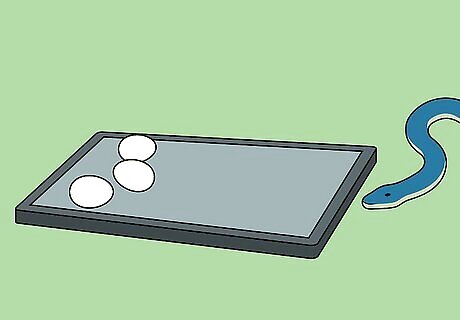
Use a glue trap. This is a common and inexpensive trap available at most hardware stores. The trap will be a box with glue on the bottom. The box will have bait and lure the snake into the box where the glue will prevent them from leaving. For bait you can use frozen mice available at pet stores or common eggs from the grocery store. Check the glue trap regularly. The snake will still be alive and immobile, and after a few days they could starve to death. Choose a trap big enough for the snake you want to catch. If the trap is too small, the snake still may be able to get away, dragging the glue trap along. This will also likely kill the snake. Use a vegetable or olive oil to remove the snake from the glue trap. Pour olive or vegetable oil on the snake in an area you want them released. This will remove the stickiness of the glue and allow the snake to slither away unharmed.
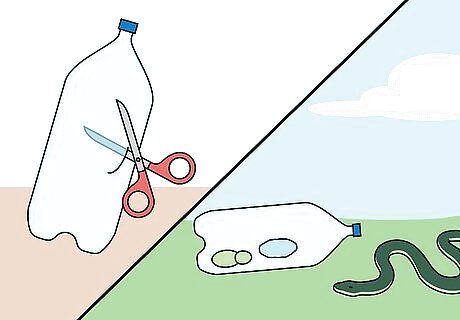
Make your own snake trap. You can do this using a plastic bottle (such as an empty two-liter), bait, and scissors. Clean the bottle so there are no smells that would scare a snake away. Cut a small hole, big enough for the snake to enter, in the bottle. Once the snake feeds on the bait they will be too large to leave back through the same hole they entered through.
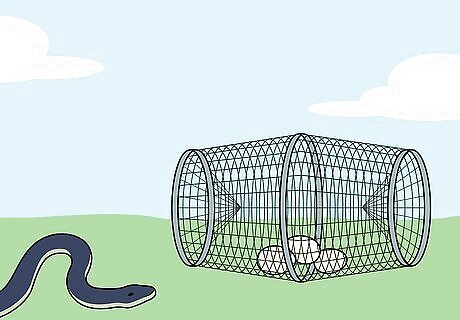
Use a minnow trap. Wired traps used for catching minnows are great. Put some eggs in the trap to lure the snake in. They will be able to find their way in but will be unable to get out once they eat the eggs.
How to Catch a Snake by Hand
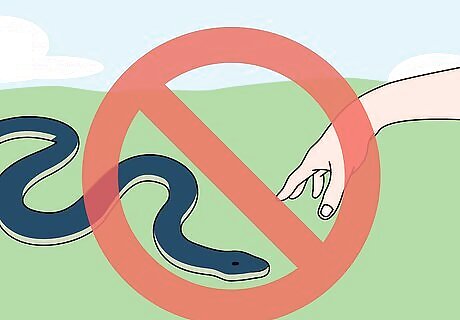
Make sure the snake is safe for handling. All snakes may bite if provoked, but some pack more of a punch and are venomous. It can be hard for someone without an expertise in snakes to tell from only looking at a snake, so proceed with caution. If you suspect that a snake is venomous, do not try to catch them with your hands. Some of the most common U.S. based venomous snakes are: Copperhead snakes. These are found most commonly in the eastern and mid-southern states. They get their name from unique copper colored scales on their head that slowly fade throughout the rest of their body.Their markings are often triangular in shape. Cottonmouth snake.These are usually four to seven feet in length. They are generally a dark shade of brown or a dull black. They have pupils that are shaped like slits and have a bulky body. They are found predominantly in the southern U.S., throughout Florida and the Mississippi River region. Diamondback Rattlesnake. These can grow up ten feet long. They are recognized by their distinctive black or brown diamond patterns down their bodies outlined in a light shade of yellow. They are a rattlesnake, and as that name implies, they have a series of hollow segments on the end of their tale that create a rattle sound when its shook. They live in the southern and south western parts of the U.S. and some of Mexico. Coral snake. These snakes can be difficult to recognize since it resembles other similar species. They are found in the eastern, southwestern, and southeastern portions of the U.S. They can grow to be around thirty inches. They are universally a red-yellow-black-yellow pattern with black heads. They are venomous, so you should be very careful if you think you spot one.

Grab a snake with caution. Catching a snake by hand is a little trickier, and should be done with caution. However, if you do not have any tools or nets handy, you can catch a snake using your hands. Use an object to distract the snake's head, like a stick. Firmly grasp their tail and lift the snake upwards, leaving the front part of their body on the ground, but keeping your legs and body as far away as possible. Place the snake in a pillow case or sack immediately. If you know how to safely approach a snake, you can also grab the snake by the back of head to neutralize their chances of biting you. However, getting so close to the snake's head can be risky. If you use this method, it may be best to have a tool, such as a snake fork, that can pin the head down before you reach for it.

Use gloves to handle snakes. Besides the risk of biting, snakes can also carry harmful bacteria such as salmonella. Use gloves to lower your risk of catching a bacterial infection from the snake. If you do not have gloves, make sure to wash your hands thoroughly after touching the snake. Do not handle food or touch anyone else before you have washed your hands thoroughly.



















Comments
0 comment